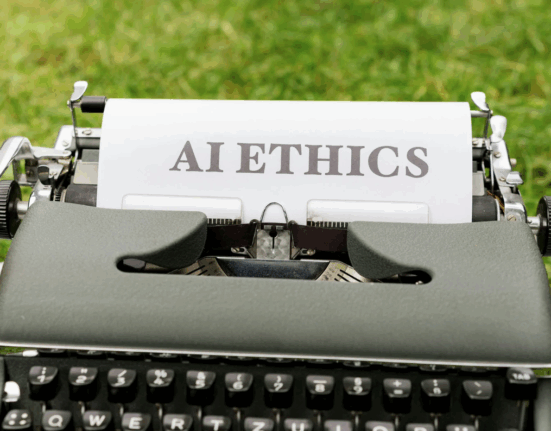Artificial Intelligence (AI) is transforming industries — from healthcare to finance — but it’s not without flaws. One of the biggest challenges facing developers and organizations today is algorithmic bias in AI. This type of bias occurs when machine learning systems produce unfair or discriminatory outcomes due to skewed data, flawed design, or human assumptions.
Managing the risks of algorithmic bias isn’t just a technical task — it’s a moral, legal, and business imperative. As AI continues to shape our world, understanding how to recognize and mitigate bias is critical for building systems that are fair, transparent, and trustworthy.
What Is Algorithmic Bias in AI?
Algorithmic bias happens when an AI system’s outputs systematically favor or disadvantage certain individuals or groups. It often stems from the data used to train these models — data that may reflect historical inequalities or incomplete information.
Common sources of bias include:
- Data bias: Skewed or underrepresented datasets.
- Label bias: Human subjectivity in assigning categories or tags.
- Algorithmic bias: Design or model structure that amplifies inequality.
- Societal bias: Pre-existing social disparities that AI unintentionally learns.
The result? AI systems that perpetuate discrimination rather than eliminate it.
Real-World Examples of Algorithmic Bias
Algorithmic bias in AI isn’t hypothetical — it’s already impacting real lives.
- Recruitment systems: Some hiring algorithms have favored male candidates over women due to biased historical data.
- Facial recognition: Studies show higher error rates for darker skin tones, leading to misidentification and privacy concerns.
- Credit scoring models: Certain financial AI systems have offered higher loan rates to specific demographics.
- Healthcare algorithms: Biased models have underestimated the needs of minority patients based on flawed data inputs.
Each example demonstrates how bias, left unchecked, can erode trust and cause tangible harm.
Why Managing Algorithmic Bias in AI Matters
Unchecked bias isn’t just unethical — it’s costly. Businesses face reputational, legal, and financial risks when AI systems behave unfairly.
Key reasons why managing bias is essential include:
- Fairness and equity: Ensuring that AI treats all users equally.
- Regulatory compliance: Meeting global standards such as GDPR and the EU AI Act.
- Public trust: Users are more likely to adopt AI they perceive as fair and transparent.
- Better performance: Removing bias improves model accuracy and reliability.
Responsible AI isn’t just about innovation — it’s about accountability.
How Algorithmic Bias Develops
Understanding how bias enters AI systems is the first step toward managing it effectively.
1. Data Collection
AI learns from the data it’s given. If the data is incomplete, unbalanced, or historically biased, the model will inherit those flaws.
2. Model Training
During training, algorithms may overfit certain patterns or fail to recognize minority cases. If not corrected, these issues lead to systemic bias.
3. Deployment
Even a fair model can become biased once deployed if it interacts with evolving environments or skewed feedback loops. Continuous monitoring is crucial to detect such drift.
Key Strategies to Manage Algorithmic Bias in AI
Reducing bias requires a combination of technical solutions, governance policies, and ethical oversight.
1. Diverse and Representative Data
Ensure datasets include all relevant demographics, regions, and contexts. Avoid over-representing one group while under-representing another.
Example: In image recognition, training data should include faces of different ages, genders, and ethnicities to improve model accuracy.
2. Bias Detection Tools and Audits
Use AI fairness tools like IBM AI Fairness 360, Google What-If Tool, or Fairlearn to identify potential bias during development. Conduct regular algorithmic audits to maintain fairness over time.
3. Transparency and Explainability
AI systems should provide clear explanations for decisions. Explainable AI (XAI) techniques help developers and users understand why a model made a specific prediction, increasing accountability and user trust.
4. Human Oversight and Ethical Review
Keep humans in the loop. Establish ethics boards or AI governance teams to review algorithms for fairness and alignment with company values before deployment.
5. Continuous Monitoring and Improvement
Bias management doesn’t end after launch. Regularly evaluate model performance, update datasets, and adjust algorithms based on feedback and evolving standards.
The Role of Regulation in Managing Algorithmic Bias
Governments and organizations are implementing frameworks to promote fairness in AI.
- EU AI Act: Requires high-risk AI systems to meet strict transparency and bias mitigation standards.
- U.S. AI Bill of Rights: Encourages human-centered AI and equitable algorithm design.
- OECD AI Principles: Promote inclusive, trustworthy AI that respects human rights.
- ISO/IEC 42001: Establishes AI management standards focusing on governance and ethics.
Compliance not only prevents penalties but also builds public confidence in responsible AI.
Ethical Considerations in Bias Mitigation
Beyond technical fixes, ethical reflection is critical. Developers must ask:
- Is the data we use fair and inclusive?
- Could our model unintentionally harm certain groups?
- Do we have diverse voices reviewing our algorithms?
By integrating ethics from design to deployment, businesses can align innovation with societal good.
Building a Culture of Fairness in AI Development
A strong organizational culture helps prevent algorithmic bias. Steps include:
- Promoting diverse hiring in AI and data science teams.
- Encouraging cross-disciplinary collaboration between developers, ethicists, and legal experts.
- Offering bias awareness training to employees involved in AI development.
Ethical leadership starts from the top — and sets the tone for the entire AI lifecycle.
Future Outlook: Fair and Responsible AI
As AI continues to evolve, managing algorithmic bias will remain a top priority. Future trends include:
- Automated bias detection frameworks integrated into AI pipelines.
- Regulatory enforcement requiring algorithmic transparency reports.
- Ethical certification programs for AI models and organizations.
The next generation of AI will not only be more powerful — it will be more accountable.
Conclusion
Managing algorithmic bias in AI is essential for building technology that is fair, transparent, and trustworthy. By addressing bias early and maintaining oversight, businesses can protect users, enhance innovation, and comply with emerging regulations.
The goal isn’t to create perfect AI — it’s to create responsible AI that reflects human ethics and values.
FAQ
1. What is algorithmic bias in AI?
It’s when an AI system produces unfair outcomes due to biased data, design flaws, or human assumptions.
2. How can businesses prevent AI bias?
By using diverse data, conducting regular audits, and maintaining human oversight.
3. Why is algorithmic bias a problem?
Because it can lead to discrimination, legal risks, and loss of public trust in AI systems.
4. What tools can detect AI bias?
Tools like IBM AI Fairness 360, Fairlearn, and Google’s What-If Tool can identify and reduce bias in machine learning models.
5. What role does regulation play?
Regulations like the EU AI Act and OECD Principles promote fairness, transparency, and accountability in AI deployment.








